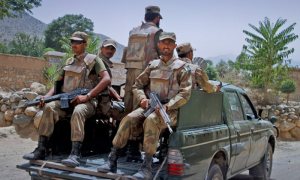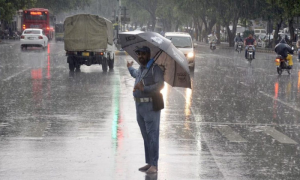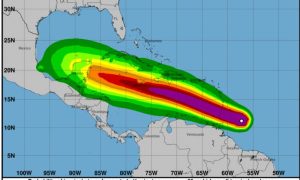KATHMANDU, Nepal: On Everest’s sacred slopes, climate change is thinning snow and ice, increasingly exposing the bodies of mountaineers who died pursuing their dream to summit the world’s highest mountain.
This year, a team risked their own lives to recover some of these bodies. As part of Nepal’s mountain clean-up campaign, five frozen bodies were retrieved, including skeletal remains. The process is challenging and dangerous, requiring hours of chipping away at the ice with axes and sometimes using boiling water.
Aditya Karki, a major in Nepal’s army, led the team of 12 military personnel and 18 climbers. Karki noted that global warming is causing bodies and trash to become more visible as the snow cover thins.
Over 300 people have perished on Everest since expeditions began in the 1920s, with eight deaths occurring this season alone. Many bodies remain hidden by snow or swallowed by deep crevasses. Others, still in their colorful climbing gear, have become landmarks en route to the summit.
Karki mentioned the psychological effect of seeing dead bodies on the way up, which can be distressing for climbers who believe they are entering a divine space.
The retrieval process is complex. One body, encased in ice up to its torso, took 11 hours to free. The team had to use hot water to loosen it and then pried it out with axes. The bodies, dressed in full gear, sometimes appear almost as they did at the moment of death.
Rescuing or recovering bodies at high altitudes is controversial and costly, requiring up to eight rescuers per body. A body can weigh over 100 kilograms, and at high altitudes, carrying heavy loads is severely challenging.
Karki emphasized the importance of bringing the bodies back to prevent the mountains from turning into a graveyard.
The retrieved bodies are now in Kathmandu, with some likely to be cremated if not identified.
Despite these efforts, Everest still holds many secrets. The body of George Mallory, who went missing during a 1924 summit attempt, was only found in 1999. His partner, Andrew Irvine, and their camera, which could rewrite mountaineering history, remain missing.
The clean-up campaign, with a budget of over $600,000, also brought back 11 tonnes of rubbish. Fluorescent tents, discarded climbing equipment, empty gas canisters, and human excreta litter the well-trodden route to the summit.
Tshiring Jangbu Sherpa, who led the body retrieval expedition, expressed a sense of duty to give back to the mountains by removing the trash and bodies to clean them.























